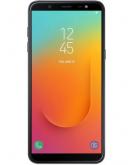Read the description below and who knows, the Samsung Galaxy J8 3GB 32GB might be for you!
The Samsung Galaxy J8 3GB 32GB was launched in July 2018. The smartphone comes with a 6 inch screen with a resolution of 720 x 1480 pixels.
Processor
This Samsung is powered by a Qualcomm Snapdragon 450 64-bit chip with a 1,8 GHz Octa-Core processor. This chipset has a octa-core processor with 3072 MB RAM. With a thickness of 7.95 millimeters, the device is not too thick. This phone weighs 177 grams.
Camera
The Galaxy J8 3GB 32GB has a 15,9 megapixel camera, it means that the camera is capable of capturing detailed images without the added cost and complexity of a higher megapixel count. This can be useful if you want to take high-resolution photos that you can zoom in on or crop without losing too much detail, but you don't need the very highest level of image quality. In general, having this amount of megapixels can provide a good balance of image quality and affordability. You can also use the 15,93 megapixel selfie camera for video calling, for example. Please note that this device does not have expandable memory and that you regularly transfer the photos to the computer or the cloud to have enough space.
Pros
- 15,9 megapixel camera
- 64-bit octa-core processor
- Not too thick with 7.95 millimeters
- (Relatively) new operating system: Android 8.0 (Oreo)
- HSDPA, LTE-A support for super fast internet
- Enough RAM (3GB)
- With a 3500 mAh battery you are not likely to run out of power
- Dual SIM
Negatives
- No expandable memory
Call & data functions
The Samsung Galaxy J8 3GB 32GB supports frequencies from international networks with which you can use the fastest LTE-A network. The speed of LTE-A is perfect for watching video on the go via your mobile network, where the speed is often even higher than the WiFi connection at home. Choose a large data package with this device. You can also connect via WiFi at home or at the office.
Dual-sim
A dual-SIM phone is a type of mobile device that has the ability to use two separate SIM cards. This allows the phone to be connected to two different mobile networks at the same time, which can be useful for a variety of reasons. For example, a dual-SIM phone can be used to have two different phone numbers on the same device, or to have a separate work and personal phone number. Dual-SIM phones can also be useful for people who travel frequently and need to use local SIM cards in different countries. Some dual-SIM phones have a physical slot for the second SIM card, while others use a virtual or eSIM.
Memory and connection options
The Samsung has 3072 MB of RAM (3 GB) and 32 GB internal storage There is a USB connection, you can use this to exchange data with your laptop or to charge your device. Connecting Bluetooth headsets or car kits is no problem.
Do you take a lot of photos and videos? Then the storage of 32 GB is less suitable. You may need to clean your phone after a while. Furthermore, there are of course possibilities to expand storage in the cloud, such as with Google Drive or Dropbox.
Screen & operation
The phone is operated via the huge 6 inch touchscreen.The Samsung Galaxy J8 3GB 32GB can display up to a 16 millions colors. This screen has a resolution of 720 x 1480 pixels. With 274 pixels per inch, this eXtra High density screen is sharp and easy to read. It also takes less effort to look at it for a long time.
Operating system
Android 8, also known as Android Oreo, is a version of the Android operating system that was released in 2017. It includes a variety of new features and improvements, such as improved battery life, support for picture-in-picture mode, and new security features.
Some of the key new features of Android 8 include:
- Background limits: Android 8 introduces new limits on what apps can do in the background, helping to improve battery life and device performance.
- Picture-in-picture mode: This feature allows users to watch a video in a small, movable window while using other apps.
- Autofill framework: Android 8 includes a new autofill framework that allows users to easily enter their login and other personal information into apps and forms.
- Notification dots: Android 8 introduces notification dots, which are small dots that appear on app icons to show that the app has a new notification.
- Adaptive icons: Android 8 allows app developers to create adaptive icons, which can change shape and appearance depending on the device and user preferences.
- Overall, Android 8 includes a variety of new features and improvements that can enhance the user experience and improve the performance of Android devices.

